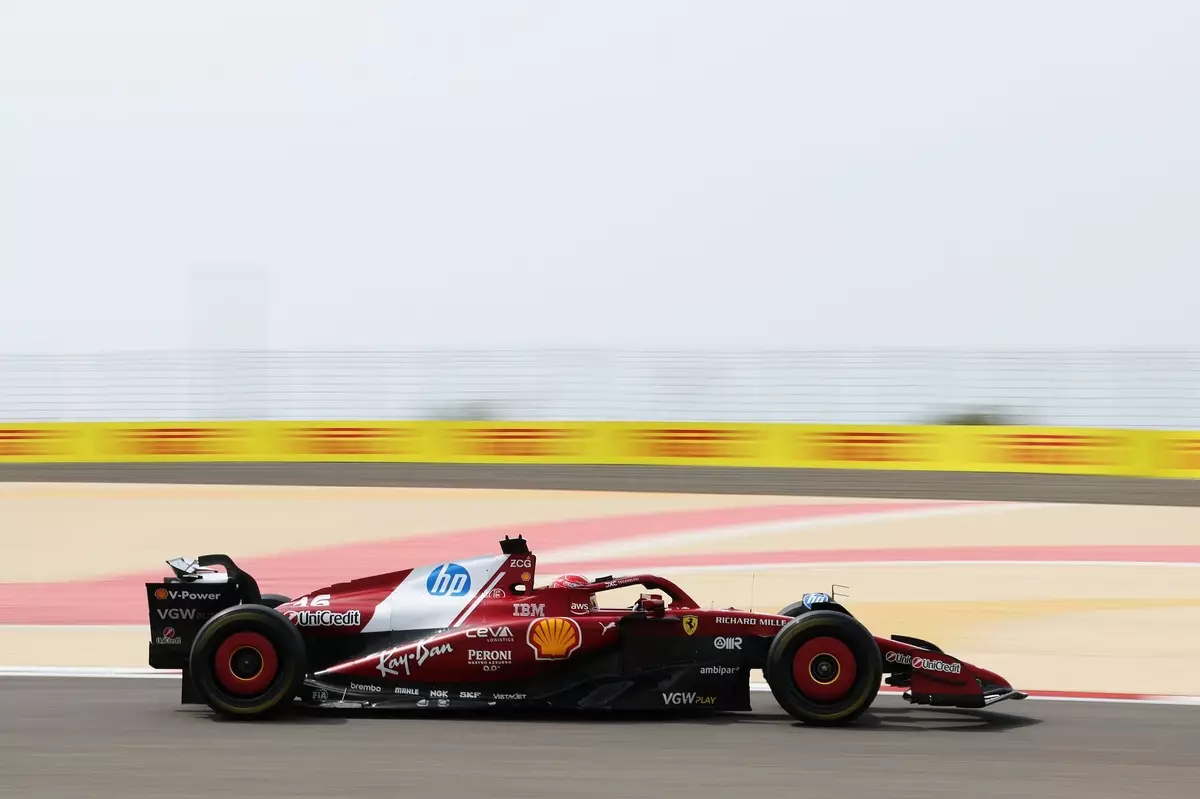The atmosphere surrounding the final morning of Formula 1’s pre-season testing in Bahrain was charged with excitement and anticipation, as teams and drivers prepared themselves for an upcoming season that promised intense competition and thrilling moments. Among the most notable performances was that of Ferrari’s Charles Leclerc, who emerged as the fastest driver of the session. His time of 1m30.811s not only showcased the potential of the Scuderia but also set a benchmark that would reverberate throughout the rest of the day.
Leclerc’s strategic approach during the session was palpable as he engaged in a lively tussle with rookie driver Andrea Kimi Antonelli from Mercedes. The two battled it out in the early stages, trading fastest laps and setting the tone for what would be a fascinating session. Such performances underline the intricate interplay between driver skill and the technological advancements of their machines, which remain at the core of Formula 1 racing.
The competitiveness of the session was highlighted by the mere 0.077 seconds separating Leclerc and Antonelli, with the latter pushing hard to demonstrate his talents as a newcomer in the sport. Antonelli’s best effort at 1m30.888s exemplified the potential he brings to Mercedes, a team that has long been associated with success. However, Leclerc’s final lap solidified his position, leaving Antonelli to reflect on the narrow gap that separated them.
As the morning progressed, the conditions changed. The wind began to pick up, bringing with it an additional layer of complexity for the drivers. This served as a reminder that while technology plays a significant role, the human element of racing—balancing speed with control—is constantly tested.
Despite their best efforts, not all drivers enjoyed a smooth morning. Lando Norris faced significant challenges navigating his McLaren, battling crosswinds that led to a challenging outing. His off-track excursion at Turn 4 and an aborted lap at Turn 13 underscored how even top-tier drivers can struggle under difficult conditions. Nonetheless, Norris ended the session third overall, a testament to his resilience and ability to gather competitive data despite the hurdles faced.
Max Verstappen, the reigning champion, also made his presence felt, completing laps in the Red Bull RB21 and testing a new front wing design. His fourth-place finish saw him four-tenths off Leclerc’s pace, hinting at a fierce battle ahead in the upcoming season. The intricacies of each team’s strategies began to unfold, revealing the trajectory that their preparations were taking.
Jack Doohan’s fifth-place finish, just three hundredths of a second behind Verstappen, showcased the pressure experienced by rookies entering this high-octane environment. Doohan, like many amateurs, found himself at odds with Bahrain’s unpredictable weather, symbolizing the unique challenges faced by newcomers in the sport.
In the meantime, it was Alex Albon’s performance that stood out with the C2 tires, as he secured the sixth-fastest time. This not only indicated the adaptability of his car in varying conditions but also pointed to a potential edge for Williams as they move forward in the season. Following closely was rookie Isack Hadjar, who led the session in terms of laps completed, emphasizing the value of mileage over pure speed during these early runs.
Last-Minute Adjustments and Technical Setbacks
The session was not without its interruptions, with a moment of trepidation caused by a red flag when debris fell from the race directors’ box into the pit lane. Though it only halted proceedings for 15 minutes, it served as a reminder of the meticulous nature of Formula 1, where every slight variance can impact the session’s outcomes.
Lance Stroll’s pre-session health concerns required him to swap places with Fernando Alonso. Alonso’s eighth-place finish illustrated a carefully curated approach to pre-season adjustments, albeit with his protege Gabriel Bortoleto struggling to make significant strides due to a technical failure. The limited laps he could manage spoke volumes about the trials of acclimating to Formula 1, as he endeavored to carve out his niche.
As the final morning of testing drew to a close, the narratives that began to unfold painted a complex picture of the upcoming season. With leaders emerging alongside formidable challenges, the strategic positioning of teams suggests that the 2025 season will embody both fierce competition and moments of unpredictability. As teams leave Bahrain, the key learnings from this session will shape their approaches, ensuring that every ounce of performance is extracted from their machines in the quest for glory. The curtain may be closing on pre-season testing, but in the world of Formula 1, the real drama is just beginning.

